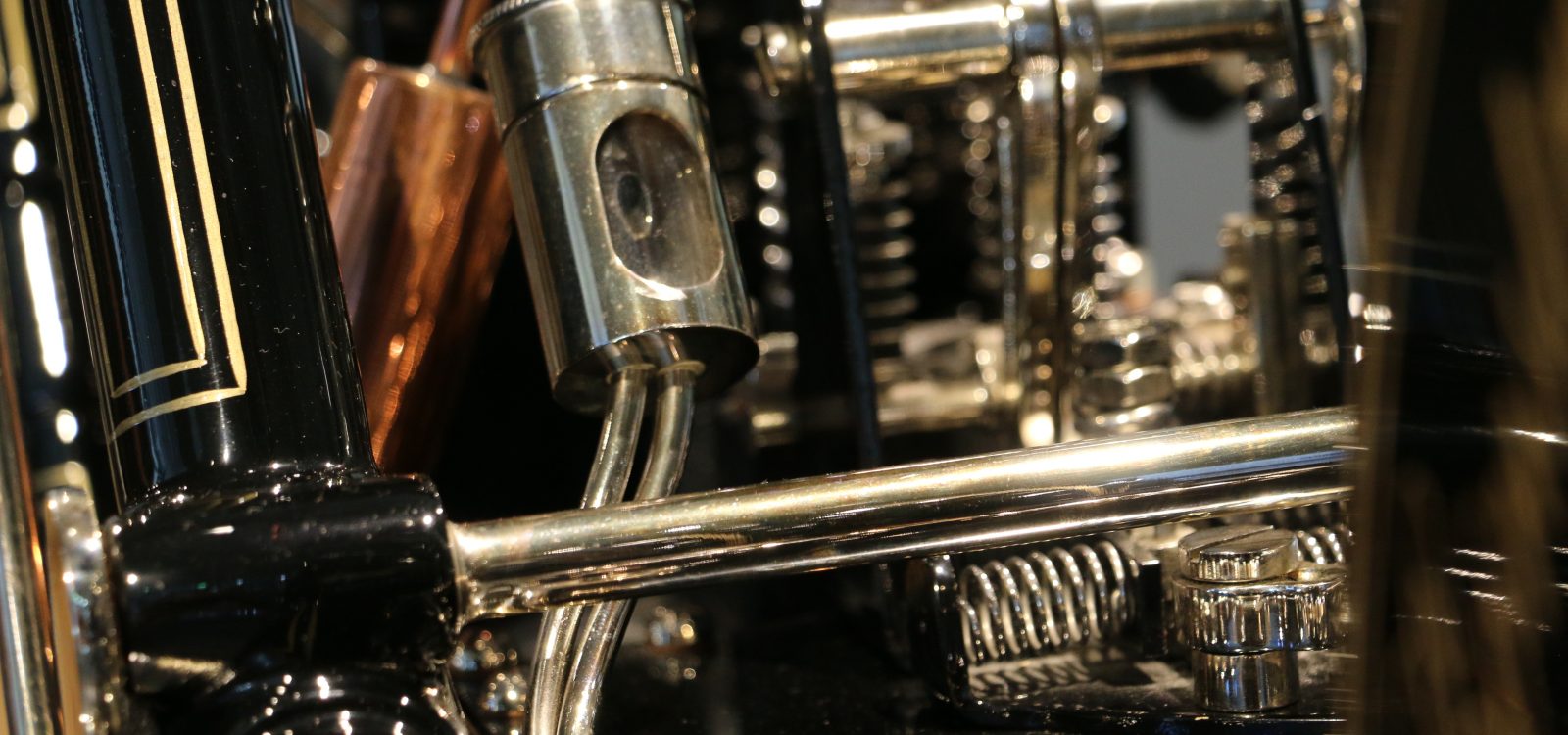1894 Hildebrand & Wolfmüller
Widely known as the first two-wheeled, motorized machine referred to as a “motorcycle,” the German Hildebrand & Wolfmüller is world’s first mass-produced motorcycle. Brothers Heinrich and Wilhelm Hildebrand, both of whom were steam engineers, joined up with inventor Alois Wolfmüller and mechanic Hans Geisenhof to design the gasoline-powered, twin-cylinder, four-stroke engine. Up to approximately 2000 units were produced and sold to people who, until then, had likely never seen any vehicle like it.
The Hildebrand & Wolfmüller’s engine works similarly to a steam locomotive. It uses horizontal pistons with long connecting rods, which utilize the rotation of the wheels, to turn the attached crankshaft. The rear wheel rotates the crankshaft and serves as the flywheel, with strong rubber bands pulling the pistons back up the cylinders to make the compression and exhaust stroke. The rubber bands also help the rider start the motorcycle, which, lacking a kickstart and pedals, needs a good push to go. Wood brakes applied to the front tire were used to slow and stop this primitive machine which could produce 2.5 hp and speeds of up to 30mph.
Specifications
- Country: Germany
- Displacement: 1,500 cc
- Engine: air cooled, horizontal twin, 4-stroke
- Ignition: Hot tube, heated by gasoline burners
- Power Rating: 2.5 hp @ 240 rpm
- Valves: Atmospheric inlet, mechanical exhaust
- Brakes: Wood brake acting on front tire
- Suspension: None
- Fuel System: Vapor from surface carburetors
- Transmission: Single speed





